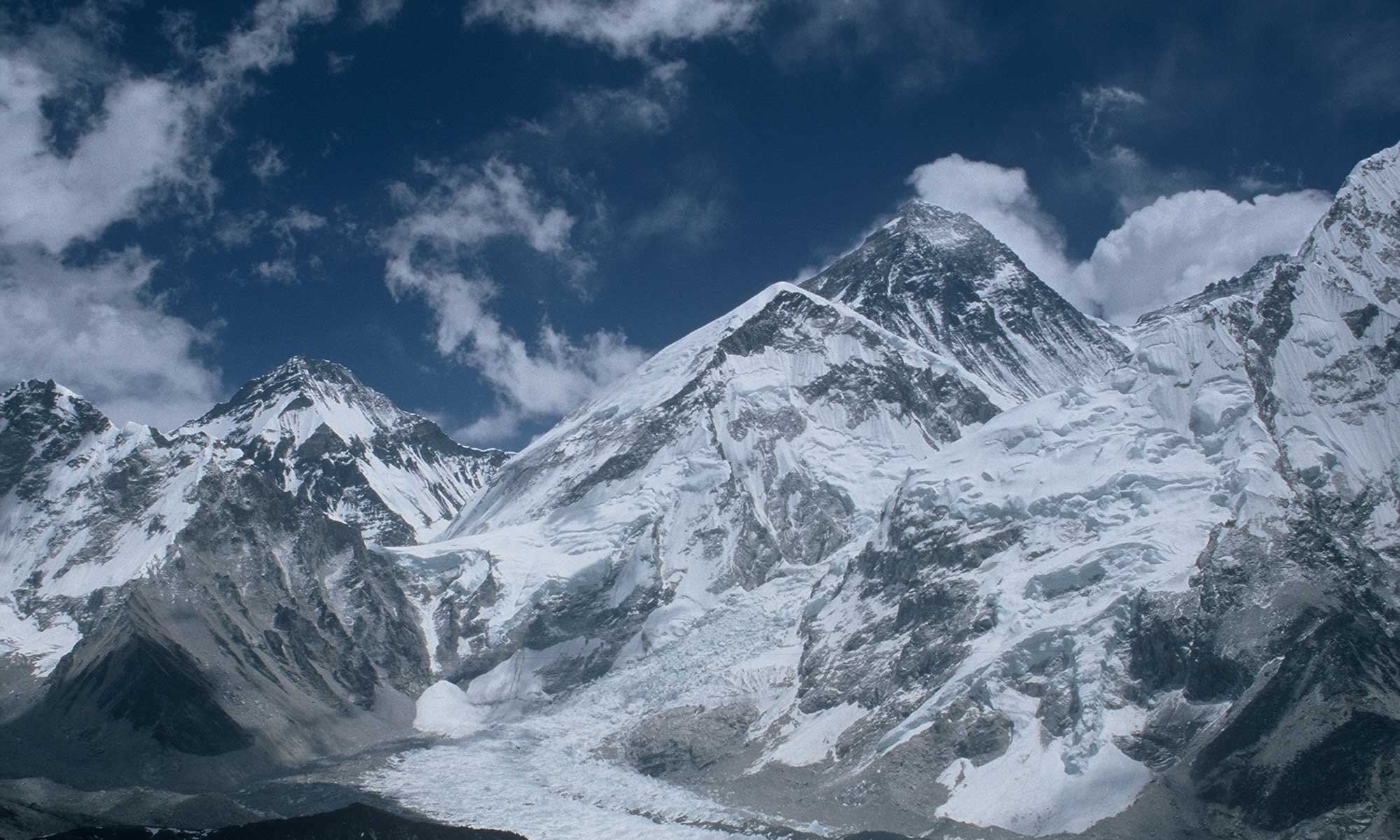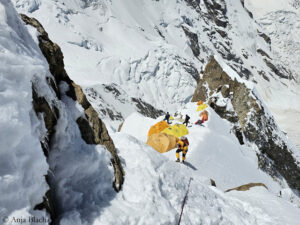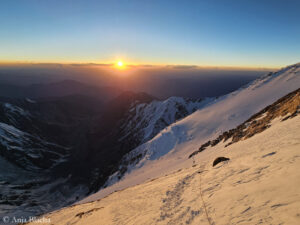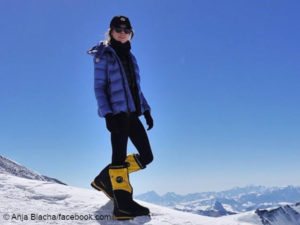
“Anja Blacha is Superwomen,” said Wladimir Klitschko three years ago in his video blog “Klitschko’s Corner” . Not only the former professional boxing world champion from Ukraine was heavily impressed by the German adventuress. At the turn of 2019/2020, Anja Blacha had hiked 1,381 kilometers on skis – solo and unsupported – from the edge of Antarctica to the South Pole. In 2019, she became the first German woman to reach the summit of K2, the second highest mountain on earth. She did it without bottled oxygen. That same summer, she stood on the neighboring eight-thousander Broad Peak, also without a breathing mask. She has scaled Mount Everest – with supplemental oxygen – from both the Tibetan north side (in 2017) and the Nepalese south side (in 2021). In 2017, she had already completed her collection of the Seven Summits,”the highest mountains on all continents.
On 2 July, Anja now stood – as reported – on the 8,125-meter-high summit of Nanga Parbat in Pakistan – without bottled oxygen and without Sherpa companion, as announced by the Nepalese expedition operator Seven Summit Treks. To speak of a solo ascent, however, would be wrong. The 33-year-old German also used the fixed ropes previously laid on the normal route. After her summit success, I sent Anja five questions. Here are her answers:
Anja, first of all, congratulations on your ascent of Nanga Parbat. How were the conditions on the summit day?

Thank you very much, Stefan. We had the best conditions – not only on 2 July, but also the day before and after, which gave us a lot of time and flexibility: hardly any wind, normal temperatures, a mostly clear summit night. Minimal shortcomings: it was quite windy for a short time in the summit region, and snowdrifts along the route meant that you often had to break trail because the steps of those ahead were covered with snow again.
You were climbing without bottled oxygen and without Sherpa companion. How did you feel physically and mentally?
I felt good overall. The excellent conditions allowed me to make it to the summit day in good shape despite little acclimatization time.
However, the descent moved me emotionally. Of the three climbers who were on the summit at the same time as me, two were in very bad shape on the descent. One of them mastered his descent to Camp 4 on his own, the other one was suffering from high altitude sickness so that I accompanied him on his descent until the evening. The third climber continued his descent and left me only the rest of his water, which I gave to the very altitude-sick climber at regular intervals.
Instead of getting help, we were joined on the descent by another climber who was also suffering from high altitude sickness and whose accompanying “guide” was already practically at full capacity looking after himself. It was not until late in the evening that other climbers took up the rescue; by this time I had already descended for myself. Unfortunately, the rescue was not to be enough for one of the climbers (the Pole Pawel Kopec). He died in Camp 4.
On the summit day, besides you, there were about 50 other climbers at the highest point. Such numbers are rather unusual for Nanga Parbat. Did you notice anything from the others?
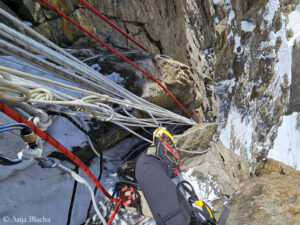
We had agreed in advance across teams. Especially at the higher altitudes, a critical amount of climbers can be helpful. Striking for me was the enormous variation in the climbers’ own efforts. Ascending with bottled oxygen for some means going to a minimum flow of 0.5 liters per minute on summit day. For others, it means using five bottles of oxygen from an altitude of 6,000 meters.
Sherpa support for some means that they simply share the tent and ascent time. For others, however, it means that they have three porters with them, who then explain to them for the first time on the way how to climb steep passages like the Kinshofer Wall. In my opinion, however, only those climbers have been problematic who were both ignorant and unsupported.
You have also climbed K2 and Broad Peak without breathing mask and Everest twice with bottled oxygen. How do you classify Nanga Parbat?.
Nanga Parbat is characterized in comparison mainly by the long distance from base camp to the summit. Large parts of the route are steep and exposed. Especially in the lower part up to 6,000 meters, the rapid melting of the snow and the resulting increasing risk of rockfall has become much more noticeable.
Due to the fact that crucial parts of the route on Nanga Parbat have been secured with fixed ropes, I found the higher technical difficulty that the mountain has in comparison is no longer crucial. Many of the climbers I spoke with this season nevertheless say that for them it was the most technically demanding eight-thousander. What I found advantageous was the much shorter time I had to spend above 8,000 meters on the way to the summit.
It has become fashionable to “tick off” as many eight-thousanders as possible in as short a time as possible. What do you think of this trend?
It makes sense. For some years now, it has been common practice for a powerful team of mostly Sherpas to set up the route and for the bulk of the climbers to follow this secured route. Stringing mountains together saves climbers a lot of time and reduces the risk of multiple ascents and descents. On Nanga Parbat, many of the climbers had only set out for their summit push because they were still sufficiently pre-acclimatized from the Nepal climbing season and also used bottled oxygen.
This does not significantly change the personal effort per ascent, as this is mainly up to the team securing the route anyway. What is reduced, on the other hand, is the experience of the expedition world and the mountain in question – summit successes and records take priority: for some temporarily, until the completion of their project, after which they want to go deeper, for others singularly, as the only goal.
Only for those who want to climb only one mountain, and then without bottled oxygen, this trend makes it more difficult, as they have less time to master their climb within the infrastructure and safety of the other teams.
Update 18 July: According to the expedition operator Seven Summit Treks, Anja Blacha has also summited Gasherbrum I today. Further information is still missing.
Update 28 July: Anja Blacha informs me that she reached the summit of Gasherbrum II (8,034 m) on 18 July and the highest point of Gasherbrum I (8,080 m) on 21 July: “Like some others, I descended only to Camp 1 in between, not to base camp, to take advantage of the weather window and save myself a second rather tricky ascent and descent through the icefall.”
